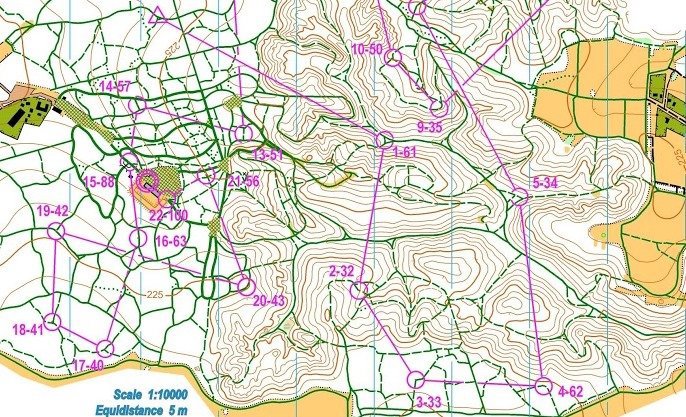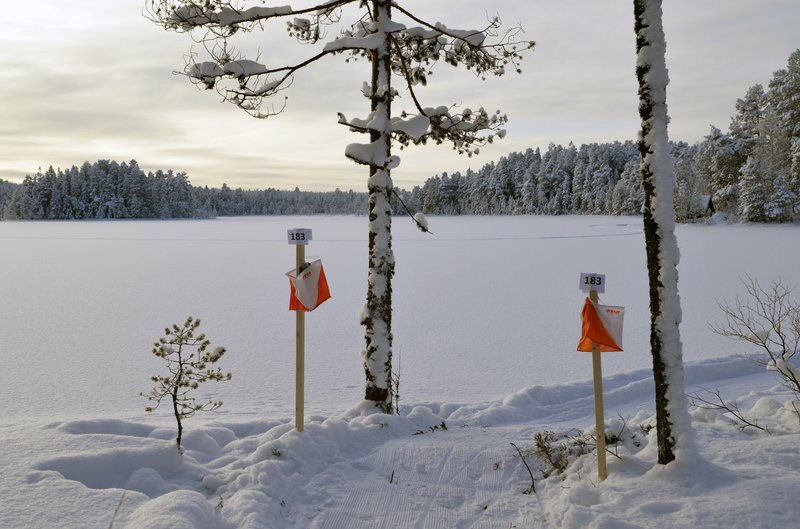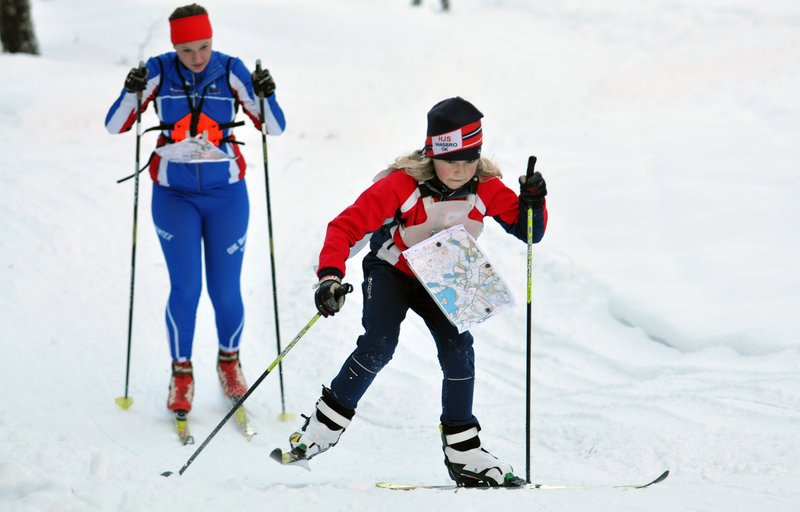Ski orienteering
The map
A ski orienteering map is designed similarly to a foot orienteering map, with one difference—the speed/quality of the ski tracks is emphasized with solid, dashed or dotted green lines.
The gear
Skis
Skate skiing is the most commonly used technique, although there are ski orienteers who sometimes use a bit of kick wax to get a better grip when going uphill in narrow tracks.
When choosing the right type of skis, bear in mind that the tracks are often soft and narrow. Today, almost everyone uses cross-country skis.
Poles
For most competitions, the track system is a mix of narrow and wide tracks with the majority being narrow tracks. The narrow tracks are usually 0,8-1,0 meters wide, which means that it’s your upper body that does most of the work, especially in uphill slopes, as compared to cross-country skiing. That’s why it’s crucial to have poles of the right length to fully benefit from the upper body work.
The optimal pole length varies and depends on the person’s size, strength and technique. As a general rule, use poles that are your height minus 20-25 centimeters, or even shorter.

The map holder
To be able to read the map while skiing, ski orienteers use a map holder attached to the upper body.

